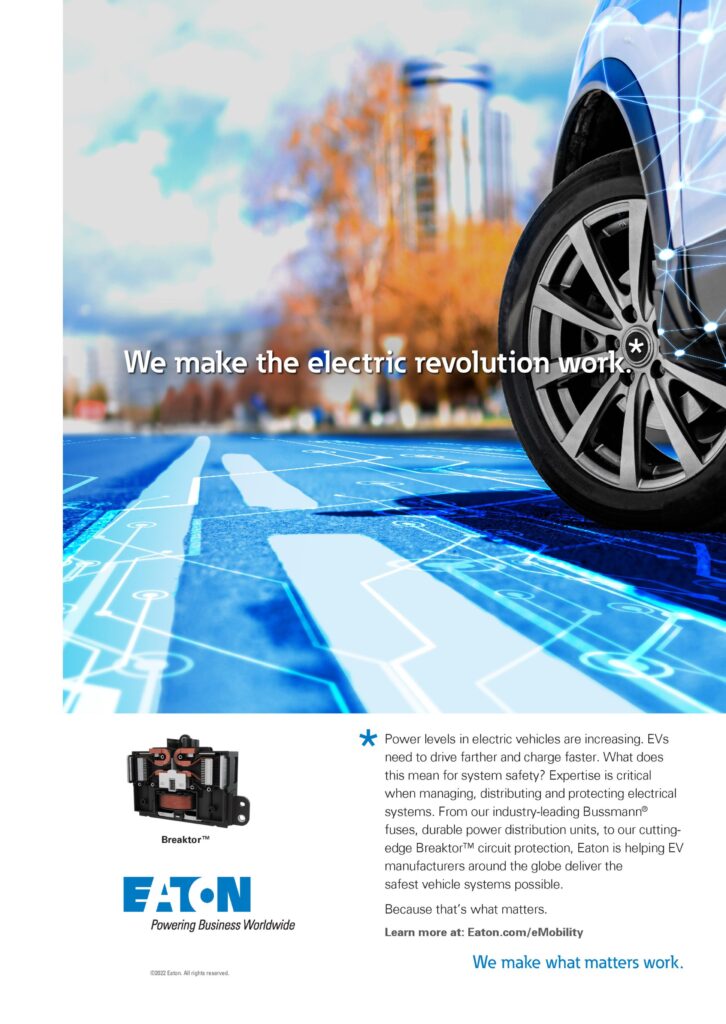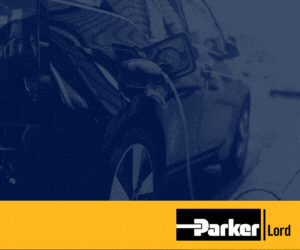Thomas de Lange
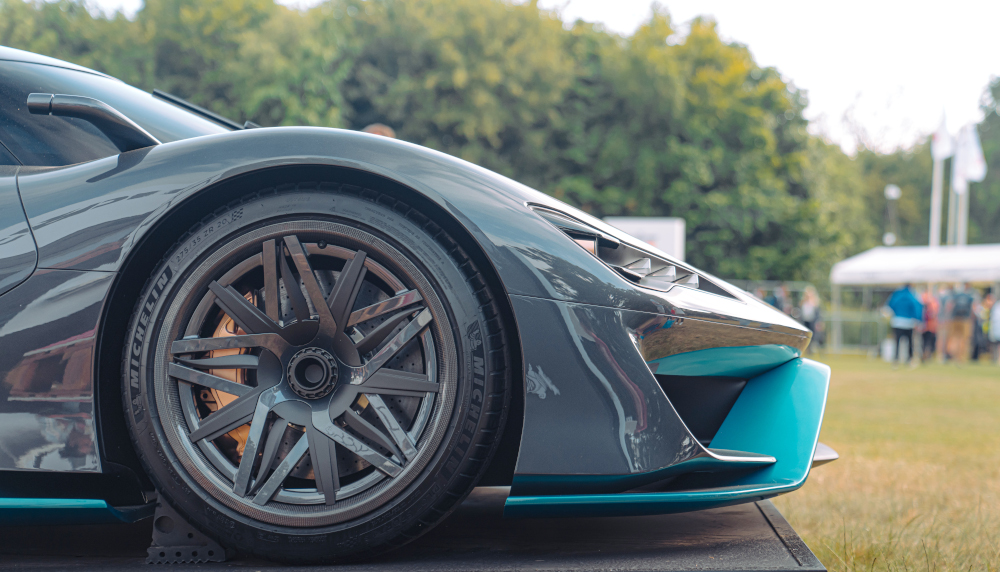
(Images courtesy of Dymag)
The wheel deal
Dymag’s CEO tells Rory Jackson about the company’s composite EV wheel technology and its advantages over traditional counterparts
As many readers know, competitive engineering of e-mobility systems takes more than just high-quality electric parts: there is far more to an EV than its battery, motor and inverter. Many of the most cutting-edge and game-changing electric road, off-road, sea and air vehicles simply would not exist without innovations in non-electric components. When it comes to maximising actual kilometres per kilowatt, attention has to be paid to subsystems such as transmissions, suspensions, tyres and lightweight materials.
Among the non-electric components going into an EV, the wheel is probably not something most of us would think to reinvent. Yet the innovations in this respect by lightweight wheel manufacturer Dymag have drawn the attention of some of the world’s most high-profile EV companies. The wheels from this UK-based company stand to make as big a difference to EVs as any of the advances in aerodynamics, battery cells and power semiconductors in the past decade.
CEO of Dymag Thomas de Lange came to the company after a career across motorsport and product engineering. A childhood love of watching car racing culminated in a work experience internship with US-based Penske Racing beginning in 1995, as he went from secondary to tertiary education, after which he studied Aerospace Engineering at the University of Southampton, in south of England, largely because that was where Penske did his testing.
His 4 years at the university were followed by a career in aero for various Penske teams, as well as Renault’s Formula One team, with a subsequent 6-year stint at technology company Dyson instilling in him an understanding of how rapid innovation, project iterations and productionisation could be achieved. He has taught this project engineering philosophy to his colleagues at Dymag since joining it as COO in mid-2019 (becoming CEO in December 2020).
The composite wheel
The innovation that fascinated de Lange and drew him to join Dymag is its carbon composite wheel technology, which it pioneered in the mid-1990s; motorbikes were its initial market before it began manufacturing for cars in 2004. Its wheels consist of a resin-reinforced carbon fibre rim with a metallic centre, a combination that provides numerous advantages over the traditional typically 100% cast aluminium wheel, the foremost of which is reducing the car’s unsprung mass.
While lightweight materials are naturally applied with weight reduction as the primary goal, whether in motorsport or automotive applications, de Lange notes that what really counts when it comes to wheels is not weight but inertia.
“Road vehicles run on these big, spinning cylinders, and their inertia is proportional to their radii, so any mass that’s further out from the centre of the wheel will add more to its inertia,” he explains. “So by making the rim from carbon, you save mass on the part that has the biggest effect on inertia.
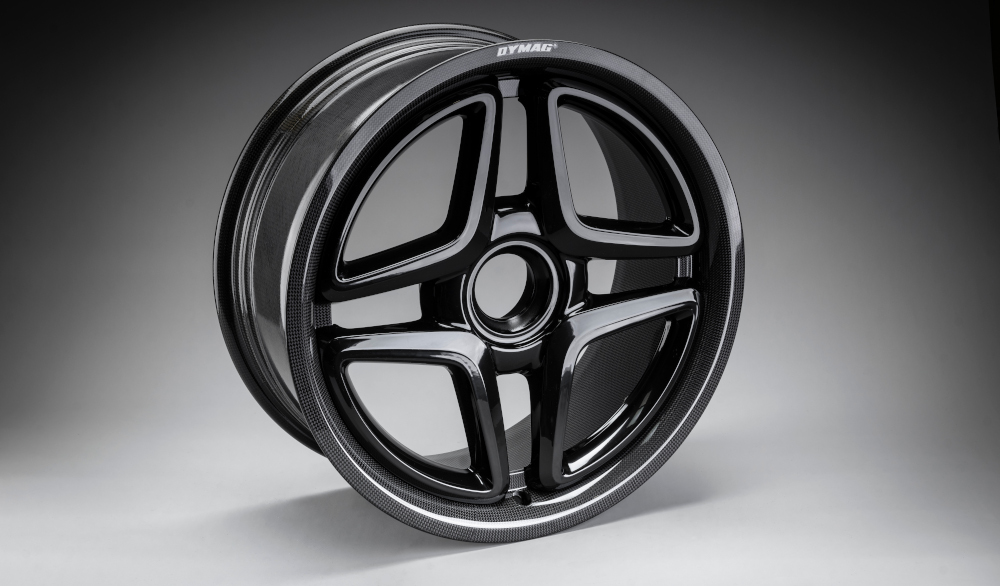
“That’s what you’re trying to control with your suspension. It’s what affects the range of the vehicle, not to mention directionally similar effects on acceleration, feel, handling and other related qualities.”
The advantage of then making the spokes from metal (with forged aluminium and forged magnesium being the commercially available options at present) comes from the fact that carbon fibre works best structurally when under tension – indeed, the lay-up is designed so that the fibres are being ‘pulled’ as much as possible when the wheel is at rest. Whenever a wheel hits an uneven part of a road, the wheel is compressed, meaning carbon spokes would lose tension in many circumstances, making them unsuitable for use as such.
“You could still use carbon if you made the spokes really thick, but sadly that’s really just not what EV designers and customers want visually, even though many EVs hide their spokes with big, flat surfaces to enhance aerodynamics,” de Lange says. “Metallic spokes provide great support under compression, as we’ve proven through every automotive standard testing regimen, and they’re more than flexible enough to manufacture with the looks designers want.”
Inside each carbon rim is a mounting flange (also carbon) for installing the spokes, which can be moved to accept different offsets, such as for wide-body vehicles or resto-modded Porsche 911s. In Dymag’s BX-F solution for example, the flange is a separately installed part, while in the BX-E the flange is integral to the rim. Titanium or steel fasteners are used for securing the spokes to the flanges, with steel threaded inserts and washers to seal the bolts.
This relates to the next key differentiator between Dymag’s wheels and conventional ones. The primary load path of Dymag’s rims goes under the bead seat, where the outer section of the tyre would sit, with foam filling the gap between the load path and bead seat. In 2016, the company’s researchers found that most of a tyre’s loading in road conditions will be transmitted laterally, into the outer wheel flange section of a conventional wheel, creating severe stress in the tyre well.
“That is what typically causes a wheel to fail: you develop microcracks over time, and the failure mode is a slow puncture,” de Lange explains. “By transmitting the loads under the bead seat through our patented structure, we avoid concentrating stress in the tyre well, making our wheels not only more fatigue-resistant but also more impact-resistant and stiff. We’ve run tests for hard radial impacts from potholes, kerb strikes and other shocks, and we’ve validated the high structural support that our carbon and metal hybrid wheels achieve.
“Wanting stiffness might sound counterintuitive – people see Formula One cars shattering their carbon fibre shells all the time – but those front wings and other bits are deliberately designed to splinter and fall off. That’s how they dissipate energy. The bits that actually protect the driver, such as the wheels and the halo, are actually really stiff and hence good at absorbing energy.
“Aluminium wheels tend to deform permanently or shatter from impacts, bleeding air thereafter. Carbon wheels have fewer and much safer failure modes and stand to really aid the safety case for EVs, and help protect sensitive onboard components such as batteries.”
The carbon sections of the rims and wheels are made using a resin infusion process known as resin transfer moulding. This begins with wrapping dry fibres around a cylindrical mandrel to form the multiple layers of carbon comprising each rim. Then, a high-end resin system is injected – this is a product from Henkel that de Lange notes has very desirable thermal properties, in addition to being extremely UV-stable and hence long-lived.
After that, the rim goes through a post-curing phase in an oven to ensure the desired structural and mechanical properties. De Lange adds, “In essence, it’s a simple process but the devil’s in the details, and there’s some IP to our manufacturing techniques that we can’t reveal publicly.”
Use in EVs
Naturally, the drivetrains, bodies, chassis and so on in EVs need to be lighter than those of conventional IC-engined vehicles in order to make best use of the electric powertrain. At the same time however, automotive consumers (in both the EV and IC-engined markets) are tending towards bigger and heavier vehicles. It’s a trend has been going on for some time, with the result that designers and consumers alike want larger and larger wheels in their cars.
“It’s not unusual to see 22-23 in-diameter wheels on cars now, and bigger wheels than that are becoming more and more common,” de Lange says “When you get to these sizes, you are looking at an incredibly heavy wheel – a conventional 22 or 23 in wheel made from cast aluminium will weigh well over 20 kg.”
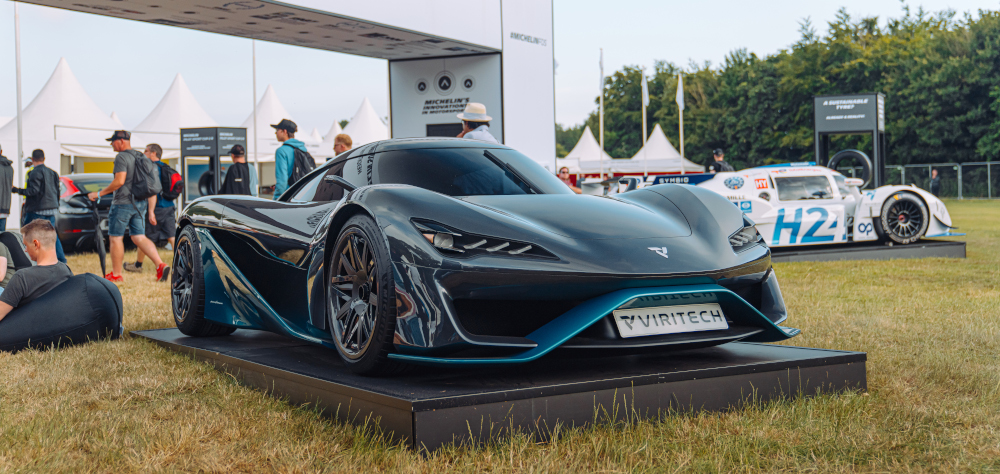
That means the mass saving to be gained from switching to carbon-hybrid wheels is around 50% of the conventional wheel’s weight – around 10 kg per wheel. Naturally, shaving 40 kg off any vehicle is worthy of note to EV engineers, but there is still more to the story in terms of automotive physics.
“Losing 40 kg of rotating mass is very different from cutting out non-rotating or ‘sprung’ mass,” de Lange explains. “Different automotive authorities will have slightly different takes on that, but the approximate figure in terms of the force on the vehicle from saving rotating mass in the wheels versus sprung mass elsewhere on the vehicle is about five to one.
“So in real terms, saving 40 kg in the wheels is equivalent to saving 200 kg in the sprung mass of the car. Granted, our wheels cost more than cast aluminium ones, but if you compare the weight saved from switching to Dymag wheels and the impact of that on an EV’s range – and compare that with the staggering sums spent on r&d, and the material and assembly costs some OEMs face when upgrading their batteries’ specific energy for comparable increases in range – composite wheels are by far the less expensive and simpler choice.
“Even if they do something similar and better understood, such as changing their roofs to carbon fibre, there’s a limit to how much of the body and chassis you can make from composite before you start running out of materials to make the sprung mass lighter of your EV. Wheels would be the obvious next choice, and our patented technologies are the most validated for achieving that.”
In addition to enhancing range, acceleration and feel, de Lange notes that the physical advantages of the Dymag wheel also translate to reduced NVH for EVs. A heavier wheel naturally requires more robust suspension and spring settings, meaning more noise and discomfort for passenger and powertrain alike.
“And if the trend towards larger wheels continues, designers will be going to 25 or 26 in wheels before long,” de Lange cautions. “If you make those from cast aluminium, a car will literally risk shaking itself to bits.”
These advantages have led to the wheel being adopted in a wide range of new EVs and upcoming e-mobility demonstrators. While many of them are still subject to NDAs, a few high-profile platforms are known to be using Dymag’s technology.
The best known of these is the Fisker EMotion, Henrik Fisker’s all-electric luxury sport sedan that was unveiled to the world in October 2016. This high-end EV was designed to use four composite wheels (among other technologies) to achieve a top speed of 260 kph and a range of 640 km between charges.
While the US company is focused these days on its more economical solar-electric Ocean SUV, de Lange notes that the composite wheels would still be a good fit for some of Fisker’s future projects, or even the EMotion depending on Fisker’s future plans for the EV.
In the UK, the hydrogen-electric Apricale hypercar from Viritech is being built with four magnesium-carbon hybrid wheels, which Dymag developed in conjunction with the company.
“That’s a great EV project to be involved with,” de Lange says. “It’s as much a product as it is a demonstrator for Viritech’s engineering philosophy in their other EVs, and we continue to work closely with them on carbon wheel technologies that are optimised to work holistically with their fuel cell powertrain and racing-inspired chassis. There’ll be some announcements on that front in the near future.
“It’s worth noting though that the vast majority of interested parties we’re talking to, both well-established OEMs and start-ups, are in the battery-electric realm. Many of them actually found out about us through aftermarket sources, such as Tesla tuners in California and suchlike. Tesla wheels are pretty heavy, to be honest, so it’s become a trend for Tesla owners to enhance their rides by getting our wheels installed on their models.”
Future plans
At the time of writing, de Lange and his engineers were satisfied with the progress they have made over the past few years in cost-optimising their wheels and designing them for manufacturability. The next step, he says, is to scale up production capacity to go from around 2000 units a year to 10,000 or more.
“We’ve signed a memorandum of understanding with Hankuk Carbon in South Korea, and we’re working together to automate and scale up our production process, which will be the main enabler in hitting those higher output figures by the end of this year,” de Lange says.
“Over the next year or so, we’ll also be fleshing out a concept for a microfactory, which will allow us to make our rims and wheels in the tens of thousands per year. On top of that, the cell-based nature of the microfactories will allow us to set them up flexibly and at much lower capital cost than traditional factories, and position them where the OEMs actually want them, which will save hugely on emissions and shipping costs.”
The company is also investigating various other ways to make its operations more sustainable and suitable for EVs in the future. These include methods for recycling composites, new materials that could be leveraged in future wheels, and systems for simulating and testing how different wheels work in different EV drivetrains, as a holistic analysis on how the wheels will perform as part of a system.
“We’re experimenting with a lot of materials and digital twinning techniques at the moment,” de Lang says. “Recycling is a little harder to go into specific details on, as it’s still difficult to remanufacture 100% of composite structural parts, but we’re seeing great examples of composite reuse; for instance, companies such as Fisker are successfully using recycled carbon in their wheel inserts. If you’ll forgive the pun, we’re determined to make production of our wheels as ‘circular’ as possible.”
Thomas de Lange
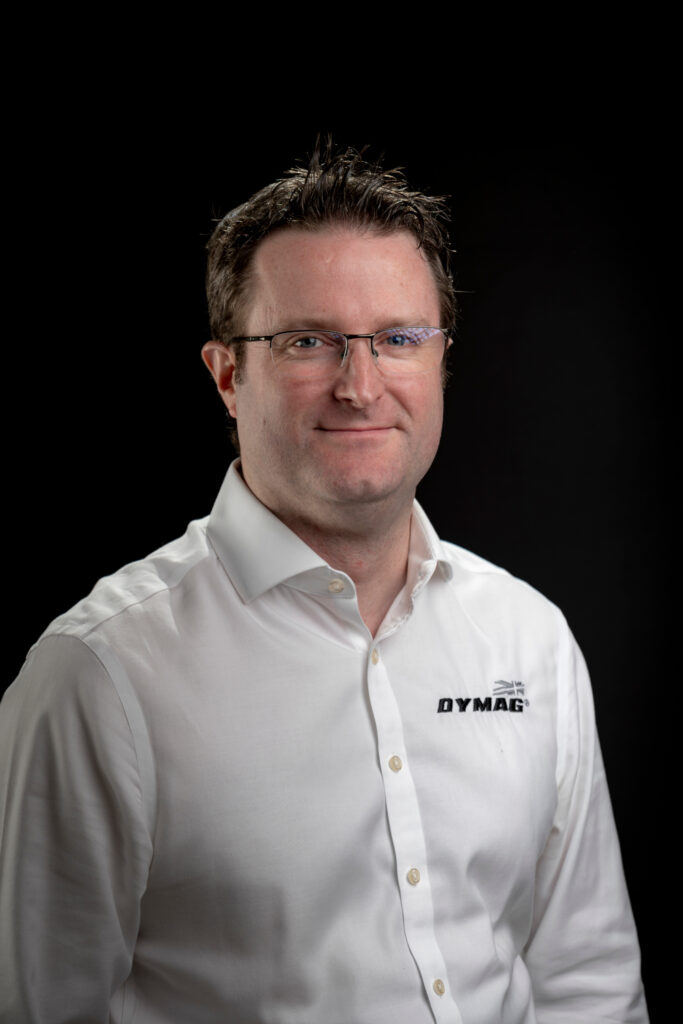
Thomas de Lange was born in 1977, and attended the University of Southampton in 1985 while simultaneously interning with Penske Racing, achieving his MEng degree in Aerospace Engineering in 1999. That same year he joined Penske full-time as an aerodynamicist, becoming the US racing group’s lead aerodynamicist 3 years later.
During his time in that position the team achieved 32 race wins, including four Indy 500 victories (2001-3 and 2006), after which he was a senior aerodynamicist at the Renault Formula One team for 2.5 years before rejoining Penske as head of aerodynamics at its NASCAR team for just over 4.5 years, culminating in Penske’s first NASCAR championship victory in 2012.
After that, following about 6 years at Dyson, he joined Dymag as its COO, becoming its managing director after 9 months and then CEO a year later, a position he has held for nearly 2 years.
ONLINE PARTNERS



















